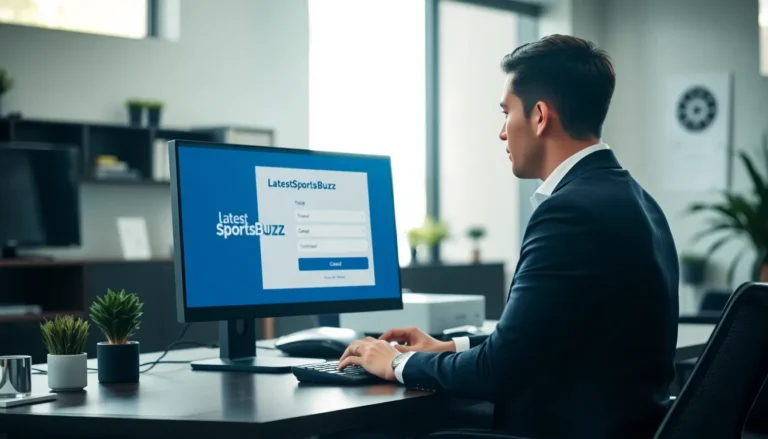Table of Contents
ToggleEver tried explaining what SaaS is to your not-so-tech-savvy friend? It’s like describing a unicorn, magical but hard to grasp. Software as a Service (SaaS) has become a staple in today’s digital landscape, offering everything from project management tools to graphic design software through a convenient cloud interface. But what about the “SaaS experience”? It’s crucial for maximizing customer satisfaction and loyalty. In this text, we’ll dive deep into what SaaS experience really means, leaving no stone unturned. Buckle up, because we’re about to embark on a digital journey worth taking.
Understanding SaaS: A Brief Overview

To appreciate SaaS experience, it’s important first to understand SaaS itself. SaaS stands for Software as a Service, categorizing software that’s delivered via the internet. Forget about installing that huge software package on your old laptop. With SaaS, you simply subscribe and access the latest features from anywhere with an internet connection.
This model began gaining traction in the early 2000s, evolving dramatically over the years. Companies like Salesforce, Google, and Microsoft have set the bar high by providing reliable SaaS solutions that emphasize usability and accessibility. So, what does this mean for users? They can always count on seamless updates and robust support without the burdens of traditional software management.
Key Components of SaaS Experience
A great SaaS experience doesn’t just happen: it’s crafted with care. Several key components contribute to this delightful experience:
- User Interface (UI): A clean and intuitive UI ensures that users can navigate easily. Think of it as the friendly concierge at a hotel.
- Accessibility: Whether via desktop or mobile, users expect their software to be accessible anytime, anywhere. This accessibility can make or break a user’s impression.
- Performance: Fast loading times and reliability are non-negotiable. Users appreciate a platform that performs well consistently.
- Customer Support: When users run into issues, responsive support is crucial. This support is like having a trusted friend who’s just a chat or call away.
- Customization Options: SaaS products that can adapt to unique user needs foster a sense of ownership and satisfaction, making clients feel their specific requirements are valued.
The User Journey in SaaS
The user journey in SaaS can be quite intricate, resembling a well-planned road trip. It consists of multiple phases, each requiring attention:
- Awareness: This phase begins when potential users first learn about a SaaS solution. Effective marketing strategies can draw them in. A catchy ad can be the bait.
- Consideration: At this stage, users compare options, seeking reviews and testimonials. They want to feel confident that they’re making the right choice.
- Onboarding: Nothing sets the tone for experience like onboarding. Smooth onboarding helps users get acclimated swiftly, leading to quicker adoption.
- Usage: Now, the users are fully engaged, utilizing the software to meet their needs. Ongoing support ensures they remain happy and productive.
- Advocacy: Satisfied users become brand advocates. They might share their experiences on social media or recommend the product to friends, fueling a positive feedback loop.
Factors Influencing SaaS Experience
Several factors influence the overall SaaS experience:
- User Feedback: Regularly collecting and implementing user feedback can transform the software into a user-friendly tool. Users often have insights that can guide meaningful enhancements.
- Integration Options: Modern businesses use multiple tools. An efficient SaaS solution must integrate seamlessly with other software, creating a cohesive workflow.
- Data Security: Safety is a top priority. A SaaS provider that prioritizes user data security earns trust, users want reassurance that their information is protected against breaches.
Best Practices for Enhancing SaaS User Experience
Enhancing the SaaS user experience can set a company apart from its competitors. Here are some best practices to consider:
- Regular Updates: Continuously improve the platform based on user feedback and market demands.
- Educational Resources: Offering tutorials, FAQs, and demo videos helps users navigate your software confidently.
- User-Friendly Design: Maintain a clean interface and ensure the software follows intuitive design principles.
- Personalization: Tailor experiences based on user behavior and preferences, creating a more customized feel.
- Proactive Customer Support: Be available and attentive, anticipating issues before they arise. Users appreciate a provider that’s one step ahead.
Challenges in Delivering a Seamless SaaS Experience
Even though efforts to streamline the SaaS experience, challenges remain:
- Technical Glitches: No one likes bugs, especially in critical software. Even minor glitches can irritate users and damage trust.
- User Resistance: Some users may resist technology changes, making onboarding difficult. Employing strategies to ease this transition is vital.
- Data Overload: Too much data can overwhelm users. Presenting user-friendly analytics and insights that drive decision-making is key.
Future Trends in SaaS Experience
As technology evolves, so too does the SaaS experience. Here are some emerging trends to watch:
- AI and Machine Learning: These technologies promise personalized experiences. Expect intelligent interfaces that can learn from user behavior.
- Mobile-First Approach: As remote work increases, SaaS providers will need to enhance mobile usability, ensuring seamless experiences across devices.
- Enhanced Security Measures: With data breaches in the spotlight, future SaaS solutions will likely prioritize advanced security layers, reassuring users.




